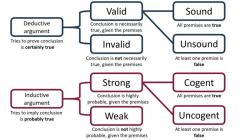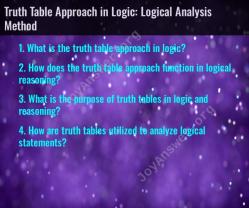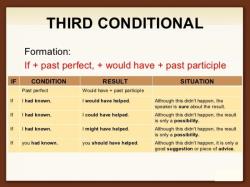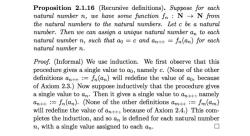How do you subproof a conditional statement?
Subproofs are a method of proof used in formal logic to establish the validity of a conditional statement, also known as a conditional proof. The basic idea is to assume the antecedent (the "if" part of the conditional) and then derive the consequent (the "then" part) under that assumption. Here's a step-by-step guide on how to create subproofs for conditional statements:
Let's say you want to prove a conditional statement of the form: , which reads "If P, then Q."
Assume the Antecedent (P): Start a subproof by assuming the antecedent P. This is typically done by writing "Assume P" or something similar.
Derive the Consequent (Q): Using the assumption P, proceed to derive the consequent Q. Use any valid logical rules or facts to make logical inferences. Your goal is to show that under the assumption of P, Q logically follows.
Conclude the Subproof: Once you have derived the consequent Q under the assumption of P, you can conclude the subproof. Write something like "Therefore, if P, then Q."
End the Main Proof: If you're proving a larger statement that depends on the conditional, you can use the derived conditional statement to make further logical inferences in your main proof.
Close the Assumption: After concluding the subproof, you should close the assumption of P. This is often done by writing something like "End of Assumption" or "Discharge Assumption." This indicates that the assumption was made for the purpose of the subproof and is no longer needed.
Here's an example to illustrate the process:
Suppose you want to prove: .
Assume the Antecedent (P): Start the subproof with "Assume P."
Derive the First Consequent (Q): Using the assumption P, derive Q.
Start a Subproof for the Second Consequent (R): Assume Q and proceed to derive R.
Conclude the Subproof for Q and R: Write "Therefore, if Q, then R."
Conclude the Main Proof: Write "Therefore, if P, then (if Q, then R)."
Close the Assumptions: Write "End of Assumption" to indicate that the assumptions of P and Q are discharged.
Remember to use valid logical rules and inference steps in each subproof. The goal is to show that the conditional statement holds under the specified assumptions.
Proving Conditional Statements in Mathematics
In mathematics, a conditional statement, also known as an implication or a conditional, is a statement of the form "If P, then Q," where P and Q are any two sentences. The "if" part (P) is called the hypothesis, and the "then" part (Q) is called the conclusion. Proving a conditional statement means demonstrating that the truth of the hypothesis always implies the truth of the conclusion.
Methods for Establishing Validity
There are three primary methods used to establish the validity of a conditional statement:
Direct Proof: This method involves assuming the hypothesis (P) is true and then using logic and reasoning to deduce that the conclusion (Q) must also be true.
Proof by Contrapositive: This method involves proving the contrapositive of the conditional statement. The contrapositive is the statement "If not Q, then not P." In other words, it is the converse of the inverse of the original statement. Proving the contrapositive is equivalent to proving the original conditional statement.
Proof by Contradiction: This method involves assuming the opposite of the conclusion (not Q) and then using logic and reasoning to show that this assumption leads to a contradiction, implying that the original conclusion must be true.
Proving with Subproofs
Subproofs are a technique used in mathematical proofs to break down complex arguments into smaller, more manageable steps. They are particularly useful when proving conditional statements, as they allow us to isolate different parts of the argument and focus on specific logical connections.
To prove a conditional statement using subproofs, follow these steps:
State the conditional statement: Clearly write down the conditional statement you want to prove.
Identify the hypothesis and conclusion: Clearly mark the hypothesis (P) and the conclusion (Q) of the conditional statement.
Create a main proof structure: Start with the main proof structure, which will typically be a direct proof, proof by contrapositive, or proof by contradiction.
Introduce subproofs: When necessary, introduce subproofs to handle specific logical connections or arguments.
Link subproofs to the main proof: Clearly show how the conclusions of subproofs contribute to the overall proof of the conditional statement.
Complete the main proof: Finish the main proof structure, using the conclusions of subproofs to arrive at the desired conclusion (Q).
Remember, proofs should be clear, concise, and logically sound. Each step should be justified, and the overall argument should be easy to follow.





